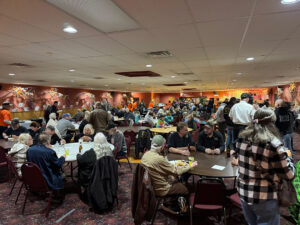Coming home from service is never easy. For veterans living in rural America, the road can be even tougher. While veteran homelessness is often viewed as an urban problem, there’s a quieter crisis playing out in the countryside—less visible, but just as urgent.
On a single night in 2022, more than 33,000 veterans were experiencing homelessness, according to the U.S. Department of Housing and Urban Development (HUD). Many of them weren’t in big cities—they were in small towns and rural communities, facing unique obstacles that make it harder to find housing and support (HUD, 2022 PIT Count).
What Makes It Harder for Rural Veterans
1. Services Are Hard to Reach
In rural areas, VA medical centers, shelters, and other support services can be hours away. Public transportation is often nonexistent, and for someone without a car, that can mean no access at all. Even when services exist, they may be scattered or stretched thin.
2. Homelessness Looks Different
Rural veterans often aren’t sleeping on sidewalks. They might be crashing on a friend’s couch, living in a car, or staying in run-down sheds or campers. This kind of “hidden homelessness” doesn’t always meet the federal definition, which can keep veterans from qualifying for help (National Alliance to End Homelessness).
3. Not Enough Affordable Housing
Rural communities often have older, limited housing stock and fewer rental options. What is available might be too expensive, in poor condition, or far from jobs and services. Veterans with disabilities face added hurdles finding homes that meet their needs.
4. Isolation and Stigma
Living in a remote area can mean fewer chances to connect with others, and some veterans are reluctant to ask for help due to pride or fear of being judged. That isolation can make it harder to find resources or even realize that help exists.
What Can Help: Solutions That Work
1. Bring Services to Them
Telehealth and mobile outreach units can help veterans access care without needing to travel long distances. The VA has made progress here, but many rural areas still lack reliable internet or cell service. Investing in infrastructure is key (VA Office of Rural Health).
2. Rethink Definitions and Outreach
Programs need to recognize rural realities. Outreach teams should look beyond traditional shelters and find veterans in less obvious situations. Loosening rigid definitions of homelessness would help more people qualify for assistance.
3. Make Housing First Work for Rural Areas
“Housing First”—which provides permanent housing without strings attached—has worked well in cities. With some tweaks, like using scattered-site housing and offering landlord incentives, it can work in rural communities too.
4. Partner with Local Groups
Veterans in small towns often trust local churches, food pantries, or clinics more than large agencies. Partnering with these community organizations builds trust and helps reach people where they are. Supporting these groups with funding and training makes a big difference.
5. Expand Veteran-Focused Housing Programs
Programs like HUD-VASH (Veterans Affairs Supportive Housing) have shown success, but they need to be more flexible for rural areas. That might mean subsidizing housing in smaller towns or training caseworkers to understand rural challenges.
Final Thoughts
Rural veteran homelessness is out there—even if it’s not always visible. But it’s not unsolvable. With targeted solutions, community partnerships, and a willingness to meet veterans where they are, we can change lives. At Northwoods Veterans Homestead, we believe no veteran should be left behind—no matter how far off the beaten path they live.






